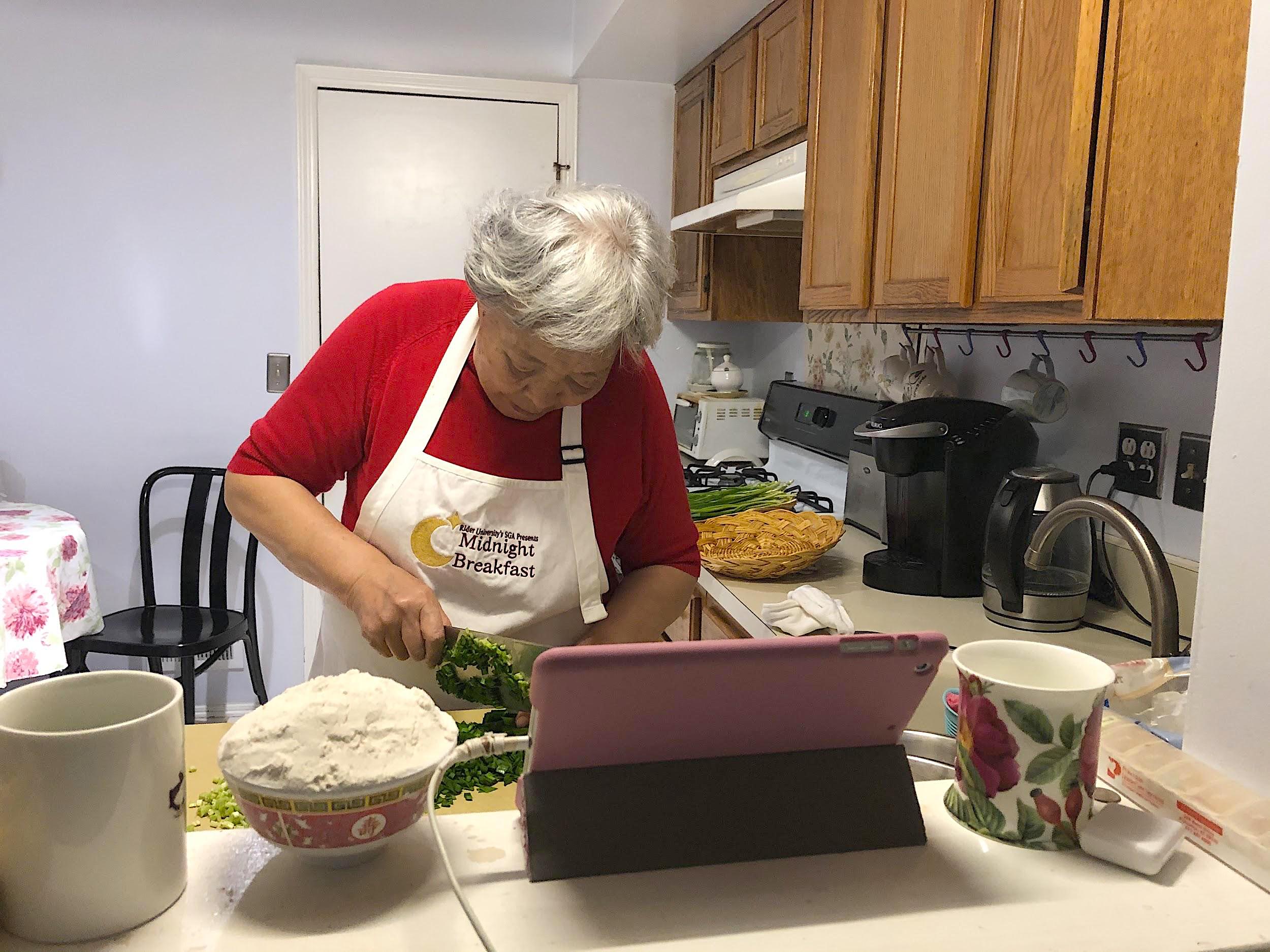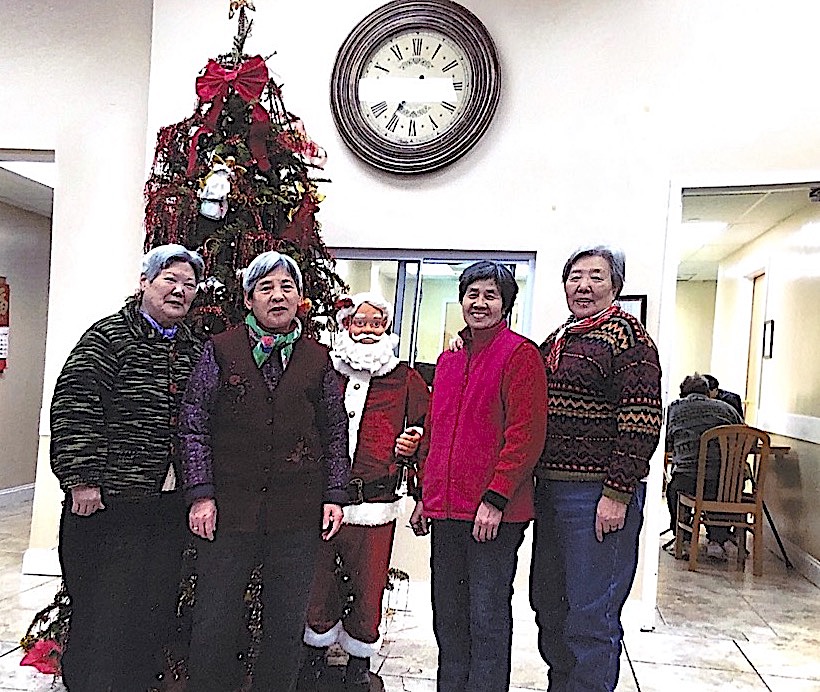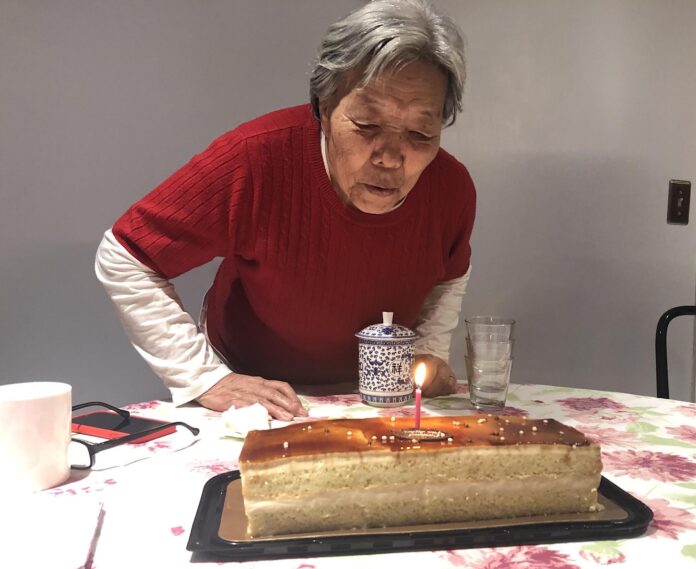In March, on one of the first warm days of 2021, 85-year-old Pei Xia Liu ventured outside of her neighborhood for the first time in more than one year since the United States first went into lockdown due to the coronavirus pandemic. Her youngest son Chuan Hui drove her to Lake Carnegie in Princeton, N.J., around five minutes from their house, to take advantage of the sunny afternoon weather. There were quite a few other people there who had the same idea, but everyone kept their distance.
The deep blue water of the lake slightly rippled whenever the wind blew and glittered under the sun. Small plastic orange balls bobbed in the water, to direct the path for canoers and rowers. As Liu walked along the lake with two face masks on, and watched people row by in their canoes, she realized how disconnected she had been from the world outside of her house.
“Every day, all I see are the rooms inside my house, the view of the woods in my backyard, and the houses around my neighborhood. I almost forgot that there was a whole world out there outside of this small bubble I had been living in.”–Pei Xia Liu, age 85
Since her age group is at high risk, Liu has spent every day since lockdown inside her home in Princeton.
Before the pandemic, she would go to her adult daycare, Forever Young Adult Medical, five days a week. No longer able to go in person, she has had to adjust to a more independent and isolated life.
In pre-pandemic days, the daycare bus would come to Liu’s house on weekdays at about 8:00 a.m. to pick her up. At the daycare, Liu would socialize with her friends, and have lunch. On certain days, the bus would also drive the senior citizens to buffets for lunch, or to stores to buy groceries.
Besides providing a place for older people to socialize, Forever Young also provided them with services. The staff offered haircuts, cut clients’ nails and used sewing machines to repair their clothes. After losing access to these services anymore, many seniors have had to try to manage these tasks on their own.

Liu has been cutting her own hair since the start of the lockdown.
“I’m not sure if it looks good,” said Liu, lightly patting her straight grey hair that flows into slight waves just below her ear. “I can’t really see the back of my head when I’m cutting my hair. Oh, who cares? I have nowhere to go anyway.”
Suqin Wu, a 78-year-old who also used to go to Forever Young, said that she’d had a particularly difficult time cutting her toenails.
“It takes me over an hour to cut them, and I dread it every time,” said Wu, laughing. “I can’t bend that well to reach my toes properly when I’m sitting on the floor. By the end of it, I’m drenched in sweat.”
The pandemic has limited the services Forever Young can provide, but the daycare has tried to find other ways to support its clients. It sends a bus to deliver meals to their houses on weekdays. On Thursdays, it delivers a small amount of groceries, such as eggs, milk, vegetables and yogurt. The meal deliveries have been helpful for Liu, allowing her to cook less.
“I’ve felt so useless—almost like a burden—to be inside all the time, and not be able to help out around the house,” Liu said. “I couldn’t do much before the pandemic either, but at least I could help buy groceries for our house. I do my best to cook meals, but I feel like no one likes my cooking.”
Liu lives with Hui and her daughter-in-law Chiu Ling. Her days consist of cooking, video chatting with family and friends, watching YouTube videos on her iPad, walking around the neighborhood, and napping in between.
Rising dependence on tech
Over the past year, she has grown very dependent on her iPad to stay connected with her friends, and stave off boredom.
Liu keeps in touch with her friends and family through WeChat. Her relatives send daily pictures and videos of her great-grandchildren, since she has been unable to visit them. Every night after eating dinner, Liu video chats with three or four of her friends from the daycare, one after the other, until she’s ready for bed.
“We talk every night around seven or eight,” said Wu. “She always calls me her little sister, and tells me she misses me. Then we talk about our day, what food we ate, and sometimes we’ll pick a song that we both like and sing it together.”
Sometimes when Hui comes home from work, he can hear snippets of Liu’s conversations with her friends from outside her room, since Liu tends to talk very loudly.
“I feel like my mom was very popular at the daycare. She video chats with so many of her friends that I can’t even keep up. At night, she’ll talk with one friend, and right after she hangs up with them, she’s already calling someone else.” — Liu’s son Chuan Hui
Liu often used her iPad to watch videos and chat with her friends and family before the pandemic as well, but much less often than she does now. Going to the daycare for the first half of her day allowed her to disconnect from technology, and to spend time with her friends. Liu’s family always jokes about how she knows the least about technology, but spends the most time of all of them using it. Every day, a constant stream of noise from Liu’s iPad projects into the house, either from her video chats or from the YouTube videos she watches (these are mainly about cooking).
“The only time we ever get peace and quiet in the house is when my mom goes to bed for the night,” said Hui. “She plays videos while she’s cooking, eating and even napping. It gets on my nerves sometimes, because I wish she would do other things besides being on her iPad all the time, but I don’t say anything about it to her because I know it’s hard for her to be stuck at home for so long.”

Liu’s daughter-in-law Ling says that on some days, the Wi-Fi in their house might have trouble connecting, and Liu is usually the first to call it to the family’s attention.
“She doesn’t know how to fix the Wi-Fi, so it’s always up to [me or Hui] to fix it,” said Ling, laughing. “She can get very impatient sometimes if it isn’t fixed right away, because she can’t go on YouTube or WeChat when there’s no Wi-Fi.”
In August 2020, the heavy winds and rainfall from Tropical Storm Isaias left Liu’s house without power for most of the day, and Liu was unable to use her iPad.
“That was the first time that I had to think of doing something else besides being on my iPad,” said Liu. “I didn’t even know how to pass the time anymore without it. The only thing I could think of doing to pass the time was sleep, which is what I did for most of that day.”
Though Liu views her new life during the pandemic as monotonous, she has grown to accept it.
“I wish I could see my friends like I used to because I really miss them,” she said. “But I don’t have anything to complain about because there are worse situations that I could be in than being stuck at home. I’m old and there’s not much I can do physically anymore anyway, so I can just take it easy at home.”
Recently, Liu got the Johnson & Johnson COVID-19 vaccine from a CVS pharmacy in Edison, New Jersey, about 40 minutes’ drive from her home. Her family had tried to find a closer place for her to be vaccinated, but couldn’t, since most locations were all already booked. Liu’s granddaughter had to get on the CVS website at 5 one morning, in order to snag the appointment.
“The CVS [where I got my coronavirus shot] was in a Target, and it felt so strange to be in a store again, and being around people other than my family. I can’t believe I used to walk around in stores surrounded by strangers and not feel scared.”– Pei Xia Liu
Liu did not have any reactions to the vaccine, and feels relieved to have finally gotten it, but she still plans to stay home.
“I don’t know when I’ll feel safe being around other people again,” she said. “But I always tell people now when they get down about this pandemic that things are finally starting to look up. I couldn’t see the light at the end of the tunnel before, but now I think I can.”


